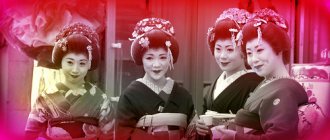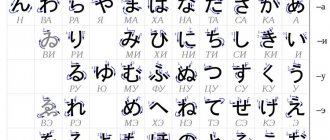Origin story
Zen meditation is inextricably linked with Zen Buddhism, which originated in China in the 5th and 6th centuries. Sometimes Zen is also considered as one of the influential schools of Buddhism in Japan (for example, Soto).
The purpose of meditation is to achieve calmness of the mind for a correct understanding of the world.
In search of an answer to the question: what is za zen, pay attention to the book “Zen Consciousness, Beginner’s Consciousness” by Shunryu Suzuki, as well as “Zen Meditation. Basic Practices" by John Daishin Buchsbazen. Here are the basic Buddhist meditation practices for beginners, including those who are completely unfamiliar with Eastern religions and philosophies.
Preparation
Zazen meditation begins with choosing a place to practice. It is best to retire in a room or in nature, where no one can interfere.
Practitioners find a cushion (quite thick and high) on which to sit during practice. The legs are crossed in a full lotus position, which can be quite difficult if the neophyte does not practice yoga on a regular basis. To sit in the lotus position, you must first place your right foot on the inside of your left thigh and cross your left leg over the inside of your right thigh.
If that doesn’t work, you can meditate in the half-lotus position (without crossing your legs). Sitting cross-legged and seiza (sitting on your knees) pose are also allowed. The main thing is that the feet point upward. The lower back should be level, the spine straight. The back should not be excessively arched back.
The position of the shoulders is also important - the right and left sides of the body should be parallel to each other. There seems to be a vertical line running through the nose and navel. The meditator's palms should also be facing upward, placed on his feet, and his thumbs should be pressed together.
seiza pose
The circle that is formed as a result of such a crossing is considered a symbol of Zen pose. You need to look carefully under your nose, at your left palm, or at a place 5 cm below your navel (meditation with open eyes is most effective).
If the meditator has done everything correctly, then the heavenly energy of qi will begin to flow through the top of his head, and the power of the earth will begin to flow from below, which means it will be easier for him to concentrate.
Everyone can check whether their posture is natural or not
In everyday life, we sit and stand up without thinking, so few people think deeply about how they sit or stand. However, let's think about the quality of our pose. You may not have heard the expression “quality of pose,” but it is very important.
I have already written that children learn the “correct” posture (chest forward, back straight) at school and at home. This is a pose that causes tension in the body.
If people have been taught that this is the correct posture, most people do not doubt and believe that this is indeed the case. But this is a big mistake.
A truly correct posture does not cause tension in the body.
The correct posture is the most comfortable and stable posture, which is called natural.
The trouble is that people don't know how to check whether their posture is natural or not. In the pre-industrial era, machine labor was not yet developed, so by doing hard work, people learned to use their bodies in the most natural way.
This was especially felt among the masters who mastered wonderful techniques and performed their work in a natural position. We can say that due to the fact that they worked in a natural position, they created masterpieces.
However, today people work primarily at desks, with machines doing the heavy lifting. Children spend time playing computer games. As a result, people lost the chance to use their bodies.
I think this is why people have a hard time mastering natural posture.
However, there is a way to check whether your posture is natural. For this purpose, I developed ki tests. Let's do the following exercises.
It takes two people: the one who takes the ki test (A) and the one who administers the ki test (B).
To begin, A straightens his back and stands straight and tense, as shown in photo 1. B touches A's chest with his right hand and presses smoothly, without jerking, from front to back.
Photo 1. “Chest forward” pose The pose is straight and tense
In this case, the upper part of the body of A loses stability, A becomes unbalanced and shifts. People often object to me: “Naturally, it moves because there is pressure on it.” But that's not true.
Let's say A's weight is 50 kg. If B had a bag of that weight in front of her, would she be able to move it by applying light pressure? Of course not, that's impossible.
However, a person weighing 50 kg moves easily. If A loses her balance from light pressure, then her posture is unstable. Just because one person is physically bigger and stronger than another does not mean they are resilient.
He will be naturally stable if he is in a natural position.
A person in a slouched position moves just as easily (photo 2).
Photo 2. Slouching posture Lack of ki, lack of energy
Now I will explain what the correct posture is.
First, run in place. You will find that your feet are in a position and spaced apart that is natural to you.
Then stand on your toes. You will feel wobbly at first, but after practicing a few times you will be able to do it naturally.
When you are stable on your toes, gently lower your heels to the ground. Make sure that at this moment your posture corresponds to that shown in photo 3. The body should be slightly tilted forward.
Photo 3. Correct pose
Then do the ki test as described above: B touches A's chest with his right hand and gently presses from front to back. Or she can make sure that her posture is stable without any additional effort on her part.
By standing on our toes and placing our heels on the ground, we can achieve stability.
Let me explain. For a stable pose, it is important to use awareness and ki.
Most often, people stand with their weight in their heels.
We can say that their consciousness is in their heels.
When we measure arm length, we measure from the shoulders to the fingertips. What about the legs? Typically people measure the length of their legs from hip to heel. But the toes are also part of the leg.
When we practice correct posture, our consciousness, or ki, naturally comes to our fingertips. If a person stands on his heels, then his ki only reaches his heels.
The Japanese used to wear sandals. If their ki did not extend to their toes, the sandals would fall off.
Modern people wear shoes. If their ki does not extend to their toes, the shoes will still remain on their feet. Therefore, shoes wear out more on the heels, and often unevenly.
Your body belongs to you, so it is natural for your ki to spread throughout your entire body. If the ki reaches your toes, you maintain a natural posture and natural stability.
Run in place and make sure your feet are at a natural distance. Then stand on your toes and gently lower your heels to the ground. This is a relaxed pose.
Should explain some important points regarding ki testing. It doesn't matter whether you move or not. When taking a ki test, you can tell yourself not to move. But if you think about not moving, you become tense and, as a result, lose your natural stability. There is no point in trying not to move. A posture that is in harmony with the universe, or a posture that integrates mind and body, has natural stability. You don't need to strain yourself. Mind-body integration pose is not only stable, but also allows you to start moving at any moment. When the body is tense, you cannot move at any time. If you tense your legs or abdominal muscles, you are not stable and cannot move freely. A pose that is in harmony with the universe is a pose with mind and body united. It maintains natural stability and you can quickly start moving at any time. Let's do the ki test while sitting in seiza.
First, kneel down as shown in the photo. Many people have a habit of sticking out their chest and tense up. Move your shoulders up and down. Only the shoulders should move. You will find that it is difficult to move your shoulders if you are tense.
Zen Meditation Technique
Zen meditation training takes years. The point, of course, is not in the chosen position or mat, but in a certain state of attention. The Zen center is considered to be the place where a person's mind is directed. In his normal state, he rushes about, but he needs to be calmed down, including with the help of certain breathing techniques.
- take the correct posture;
- relax your upper body (shoulders, chest, neck muscles);
- open your diaphragm and inhale and exhale deeply (as you exhale, relax your body).
Breathing during meditation should be deep and slow (up to 8 seconds, but aerobatics - 20-30 seconds). The more natural the breathing, the better. You should not swallow air forcefully or imitate holotropic techniques.
You need to breathe not through your mouth, but through your nose, just like exhaling. If the upper body has already relaxed, then the stomach will retract during exhalation. All attention should be focused on breathing so that the body and mind can relax. The goal of Zen meditation is not to find the answer to a question or achieve enlightenment.
It is enough to calm the mind using a basic breathing rhythm. The rest will follow. Monks compare consciousness to a surface of water, which can be calm and motionless like a mirror, or can be covered with ripples. The practitioner must achieve absolute calm in order to see the reflection of the world within himself without the usual distortions.
During Zen meditation, the student seems to slightly lift the sky with the top of his head. You should not fall asleep; the purpose of meditation is not this, but a special state of concentration and achieving inner silence.
Correct posture prevents diseases and other problematic conditions
In daily life, everyone can achieve healthy mind and body by maintaining correct posture. You might be surprised or say you don't believe it. However, it's true. One who constantly practices correct posture can prevent diseases and other problematic conditions.
The length of human blood vessels is 96 thousand km (which is approximately 2.5 times the length of the equator). The blood flowing in the vessels plays a very important role: it carries oxygen and nutrients throughout the body and at the same time collects waste products and carbon dioxide. Exchange between blood and body tissues occurs through capillaries.
Subtleties and nuances
Zen meditation can seem quite challenging for beginners. It is not so easy to stop the mind, which the ancients compared to a monkey jumping from branch to branch.
At first, 10-15 minutes a day for practice is enough, but over time the period can be increased to one hour. During retreats (meditation courses), students often sit in the lotus position from early morning until late evening, achieving control over their consciousness.
Common mistakes during meditation:
- drowsiness, head in the clouds;
- practice after eating;
- visions, fantasies, false satori (imaginary enlightenment);
- self-flagellation, remorse;
- emotional arousal (experience of resentment, anger and other emotions).
Focusing on your breathing improves your breath count. When you reach ten, you need to start counting again. Gradually our breathing will become deeper and more conscious.
Incense sticks and other incense that suit the student and do not cause allergies are sometimes helpful for concentration. You can also play meditative music if it doesn’t interfere with your concentration.
It also happens that by “replaying” the same memories or ideas in the head, a person during meditation will simply be able to understand some things for himself and get rid of obsessive thoughts. Consciousness will become clearer and meditation will become more effective.
If you feel sleepy and meditation becomes very short, then you need to open your eyes wider and focus on the hairline, and then return to natural, measured breathing.
To avoid falling asleep during Zen meditation, it is advisable for beginners to keep their eyes open at all times or to practice during the day or in the morning when there is no urge to sleep.
In Japan, monks take two ninety-day meditation training courses every year at a monastery. Quite often, secular people also go to Japanese monasteries for a short period of time, from several days to several months, and practice there together with everyone else, seeking to calm their minds.
Two meanings of the Japanese word "shisei"
There are things that are forgotten today.
Sisay is one of them.
This word has two meanings in Japanese: “posture” in relation to the body and “attitude” in relation to the mind.
When we say, “Your attitude shows in your actions,” we mean a state of consciousness.
The Japanese expression "shisei o tadasu" has two meanings. The first is to adopt a posture, the second is to improve your attitude. When we hear these words, we usually think only about the physical state and forget about the mental state.
Consciousness moves the body. Therefore, the state of consciousness is completely reflected in the state of the body. When you practice the correct posture, the state of consciousness also corrects.
If the posture is stable, the consciousness is also stable. If the posture is careless, the consciousness is also careless.
This is why it is very important to teach correct posture to children while they are still small.
The word "shisei" is written in characters (kanji) as follows: . means posture, - driving force. The state of unity of consciousness and body is reflected in the posture, and the person seems larger. When the stage master plays, he looks bigger. This is a reflection of consciousness expanding ki.
Let's practice seeing how the state of mind affects the body through ki tests.
First check if you are standing correctly. Then perform a ki test as described above. Then, without changing your posture, focus your awareness on the top of your head and perform the Ki test again. You will see that even if you have not changed your posture, you have become unstable.
If you concentrate on the top of your head, your posture becomes unstable. When we get angry, we say that anger “goes to the head.” When we are nervous, everything stalls. What's happening?
This is ki. Ki rises to the head, causing blood pressure to rise, which can lead to health problems. Sometimes we call it a hit.
Next: Without changing your posture, concentrate on the place in your lower abdomen where you cannot tense up. This place is called “one point in the lower abdomen.”
Calm your consciousness at this one point. Now, by taking a ki test, you can make sure that your posture is stable.
When your consciousness is calm and concentrated in the lower abdomen, you cannot easily become angry.
Concentrating on the lower abdomen does not mean directing force there. Many people don't understand this, so we need to be careful.
“Hold one point” is the first of the four main principles of mind-body unification that I have formulated. I will explain them in the next chapter.
If you have trouble controlling your emotions, check your posture to make sure it is correct and calm your mind at one point in your lower abdomen. Using this method, you will be able to control your emotions.
Zen Meditation Technique
Some Zen Buddhists (for example, the Rinzai sect) do not limit themselves to simply counting inhalations and exhalations during meditation.
One of the ways to achieve enlightenment is a koan - a question on a specific topic that needs to be answered through constant reflection.
This could be a question about what you were like before birth or any other question that you will have to focus on as much as possible.
As soon as the student begins to be overwhelmed by distracting thoughts, he immediately returns to the topic of the koan and tries to find the answer. Thanks to this, fixation of the mind is achieved. If the answer to the koan is found, the student begins to see the true nature of things and experiences awakening.










